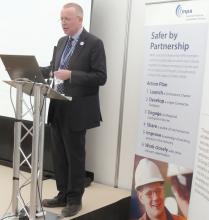
While best practices and national legislation may vary across Europe, one thing that is clear is that the industry as a whole is trying to tackle the safety issues that blighted the industry in years gone by.
In the past, the quarrying sector was one of the most dangerous industries to work in, which is why it was so good for an aggregates company to have been picked out as a top performer in this year's
Many companies are striving to achieve zero lost time accident records and a number are reaching this target - it is great to be able to report on
One thing is clear though and that is reaching these targets is not enough - continued effort in every area is important to enable the days since a lost time accident on individual sites to continue accruing.
These efforts are helping to protect quarry workers to ensure they go home to their families in one piece at the end of each shift, but the safety of other people around the quarry is also an important consideration.
There are a number of initiatives underway to help schoolchildren understand the danger involved in trespassing in a quarry to play there and also of the dangers of the trucks that deliver materials to construction sites. Cyclists are also being targeted with safety awareness programmes to help them understand the limited visibility a truck driver has and to help them protect themselves. Truck drivers are also being given the chance to see things from the cyclist perspective in a bid to help protect this vulnerable group of road users
There is a clear momentum building up when it comes to safety but one small lapse can undo the best designed programmes and initiatives and send the time since LTI back to zero
Transferring knowledge of best practice in key areas such as safety - as well as the environment and processing techniques - was one of the main aims of ABE when it was launched in 2007, so it is good to be able to share these safety highlights with you. I joined Route One Publishing to help develop the magazine and, over the last four and a half years, I hope I have delivered the magazine's aim and created a useful industry resource. I have greatly enjoyed working on the title but this is my last editorial as I am leaving to move to a new magazine and new challenge, so it is time for me to wish you all a safe and prosperous future.
Patrick Smith, Route One Publishing's managing editor, who has been appointed to succeed Claire as editor of ABE, said: "Claire has done a tremendous job since launching ABE, and I wish her all the best in her new position. I look forward to continuing her work and to introducing myself to the industry over the coming months."










